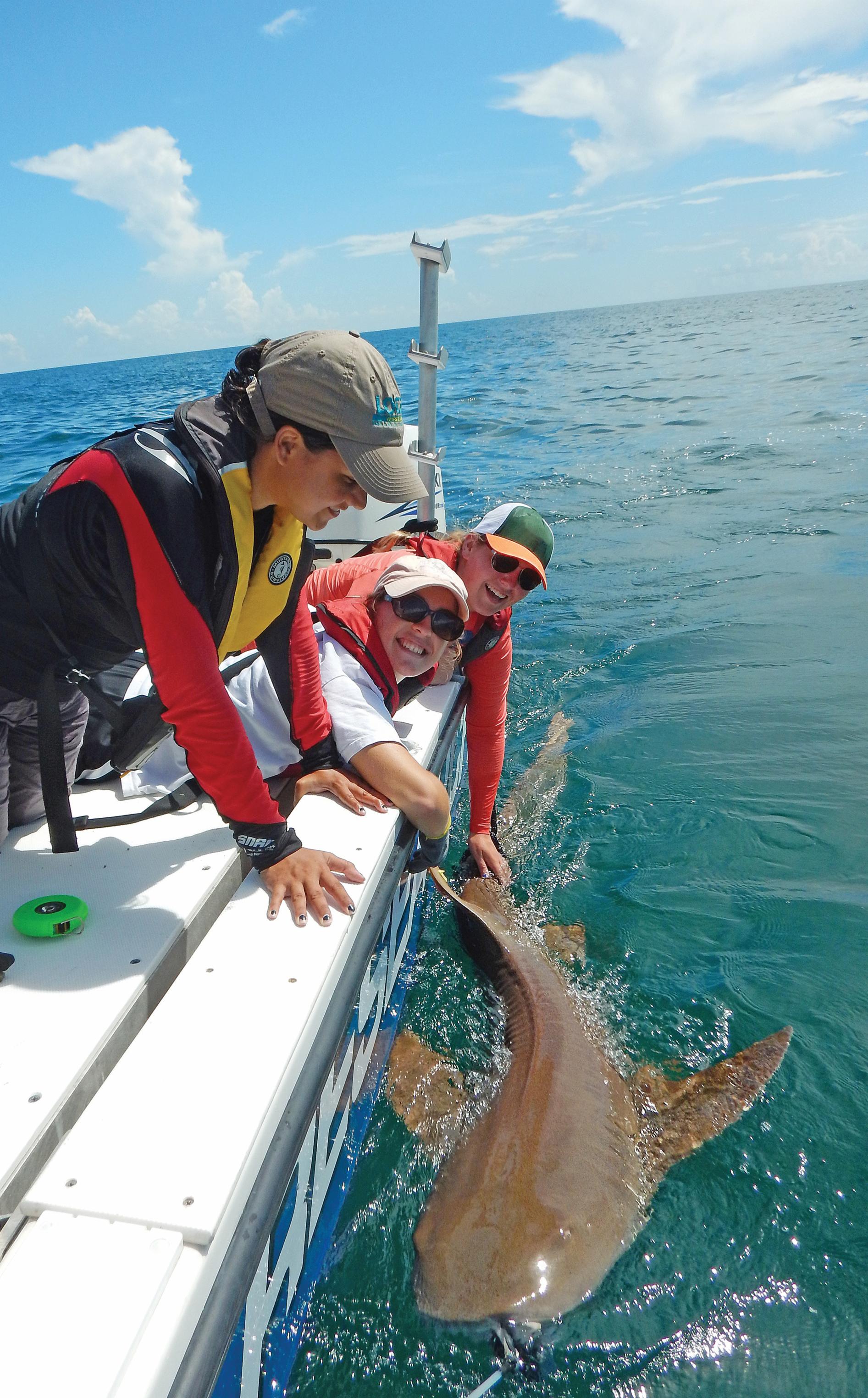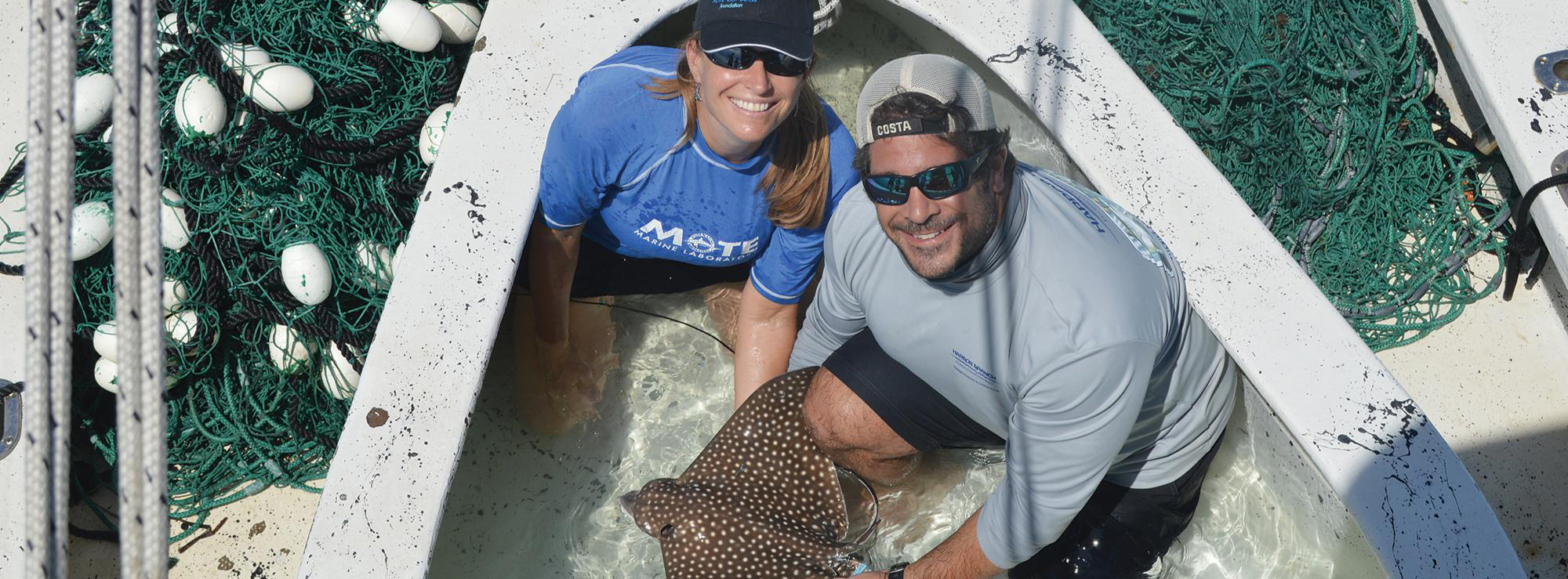Shark and Ray Study First of Its Kind in Decades
Two scientists with FAU Harbor Branch have embarked on a study to learn about the sharks and rays living in the Indian River Lagoon (IRL), a 156-mile-long estuary located along Florida's east coast. The tiniest species to the biggest predators — everything from phytoplankton to sharks — inhabit the Indian River Lagoon, making it one of the most biodiverse estuaries in North America.
Matt Ajemian, Ph.D., assistant research professor and principal investigator, and Adam Schaefer, an epidemiologist, recently captured, sampled and tagged nearly 100 sharks and rays in the lagoon, including two endangered smalltooth sawfish. The researchers hope to gain a better understanding of how anthropogenic factors like algal blooms and rain events affect these predators.
"The IRL has lacked consistent sampling of sharks and rays over the years, preventing an understanding of how this environment is potentially influencing these important species," said Ajemian. "Now that we've acoustically tagged these animals, we're able to find out where they go through the Florida Atlantic Coast Telemetry (FACT) network."
The FACT network is a collaborative monitoring effort led by the Florida Fish and Wildlife Conservation Commission and supported by other institutions to gain a better understanding of the movement patterns of a variety of aquatic species. Ajemian and Schaefer are collaborating with Kim Bassos-Hull of Mote Marine Laboratory on ray sampling. Together, they have successfully captured, sampled, tagged and released several protected spotted eagle rays.
Sharks and rays, with their slow growth rate, late maturity and low fecundity, are among some of the most sensitive marine vertebrates to ecosystem shifts. This study allows the scientists to evaluate the health of these sentinel species by measuring characteristics like length and weight, taking blood and microbial swabs, and utilizing acoustic transmitters to track movement.
The shark and ray study is made possible through proceeds from sales of the "Save Our Seas" specialty license plate, granted through the Harbor Branch Oceanographic Institute Foundation, Inc. and awarded to Ajemian and Schaefer. This research also provides the opportunity for a multitude of other scientific collaborations on both local and regional scales.
If you would like more information, please contact us at dorcommunications@fau.edu.

Students, pictured by a nurse shark off of Ft. Pierce, Florida, are assisting FAU Harbor Branch researchers on a study to learn more about the sharks and rays living in the Indian River Lagoon.
